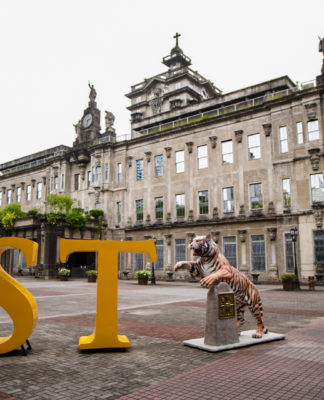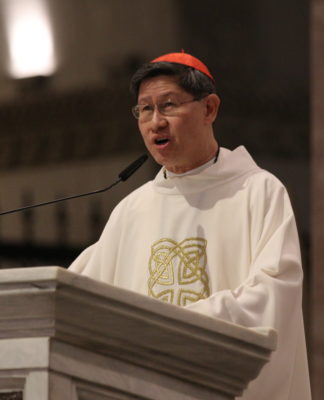As early as 50 A.D., the shroud of Turin has been revered as the actual burial cloth of Christ found by Peter after Jesus’ Resurrection. But like any other Church relics, the Shroud has been subject to endless investigations and qualms as old as its history.
Last March 8, chemist Raymond Rogers, director of the Shroud of Turin Research Project (Sturp), died after spending lifetime examining the shroud. And together with his death, the question of the Shroud’s authenticity remains unsolved.
Some simply dismiss the shroud as a fabrication. The truth is not as seamless as the cloth.
The story of the cloth
The 4.36 by 1.1 meter cloth was included in the list of Constantinople relics in 1157. The commotion began when the shroud disappeared after the Crusaders sacked Constantinople in 1204.
Knight Geoffrey de Charnay is said to have taken the shroud to a Church in Lirey, France in 1355 and transferred it to the Savoy family’s Silver Shrine in Chambery, France.
In 1532, a drop of molten silver from the reliquary that contained the shroud fell on the folded linen, destroying the fabric. The Poor Clare nuns sew 30 patches into the cloth in 1534 to repair the burnt holes. A backing cloth called the “Holland Cloth” was also sewn into the back of the Shroud to strengthen it.
The cloth was moved to Turin, Italy in 1578 upon Charles Cardinal Borromoe’s order. The Cardinal had decided on a pilgrimage by foot to see the cloth. The Shroud has been kept in Turin since then. Its latest restoration happened last 2002 in Switzerland.
The fabric under the clinic
The invention of the camera in the 19th century contributed positively on the Shroud studies. People had a clearer view of the image’s features and other sensitive details. From studies of Sorbonne University scientists in April 1902, it was concluded that the image could not be faked by painting, as there were no brush strokes and any other pigmentation found on the cloth.
The 1981 Sturp study confirmed the mentioned findings. The group saw that the blood penetrated deeper into the linen’s fibrils than the subtle dehydrated and discolored cellulose that forms the body image. This means that the blood was transferred to the cloth through body contact before the image was formed, making falsification impossible.
Subsequent studies found the making of the Shroud inexplicable. Even with modern technology, it would be impossible to create a picture-perfect image on a distorted fabric in a way that displays no use of artistic substance. Laser method would be easily be detected by the scientists if ever used in faking the image.
Scientists are as much amazed at the precision of the detail; the wounds are exactly those of Christ’s as described in the gospels. Pollen, mite, DNA and textile analysis, and burial arrangement, suggest that the ancient cloth belong to a first century Jew.
The carbon dating study in 1988 dated the fabric between 1260 and 1390 A.D., and from this, it would appear that it is a medieval hoax. However, the carbon dating did not consider the fire suffered by the Shroud. If something caught fire, it picks up carbon residues that skew radiocarbon dating.
Dr. Gilbert Lavoie, author of “Resurrected,” believes the image was created by an unknown energy source. The physician, who also took up photography courses, says the image looked as if it were floating in the air. A shroud researcher for almost quarter of the century, Lavoie said the blood flow on the shroud is vertical and that the hair of the man in the shroud hangs straight down to shoulders (not a spread out as one would find on a prone body). The feet are erect and there is light around the eyes, indicating that the man was upright with light coming from above.
Rev. Fr. Efren Rivera O.P., professor at the Faculty of Sacred Theology, said he believes that the shroud was the actual cloth that wrapped the body of Jesus. “Many people still hold that the shroud is the real cloth that wrapped the body of Jesus, and I’m one of those people. The image on the Shroud jive with Christ’s wounds caused by the crown of thorns and His crucifixion. Not all people who get crucified suffer the same fate as of Christ”, he said.
Whatever the truth about the cloth, the doubts on the authenticity of the Shroud might as well die a natural death as more and more evidences point towards its authenticity. If the proofs continue to pour in, the cloth may be declared authentic in time for the next public exposition set on 2025. Meanwhile, the Shroud would continue to wrap us in the mysteries of our faith. Llanesca T. Panti. Sources: Michael Brown, Why the Shroud of Turin is Real; Joanne Schmidt, Shroud of Turin backs Hollywood and History; and Dr. Leoncio A. Garza Valdez, The DNA of God.















